The Reserve Bank of New Zealand has slashed the official cash rate by 3.0% to 2.5%, which has driven mortgage rates sharply lower.
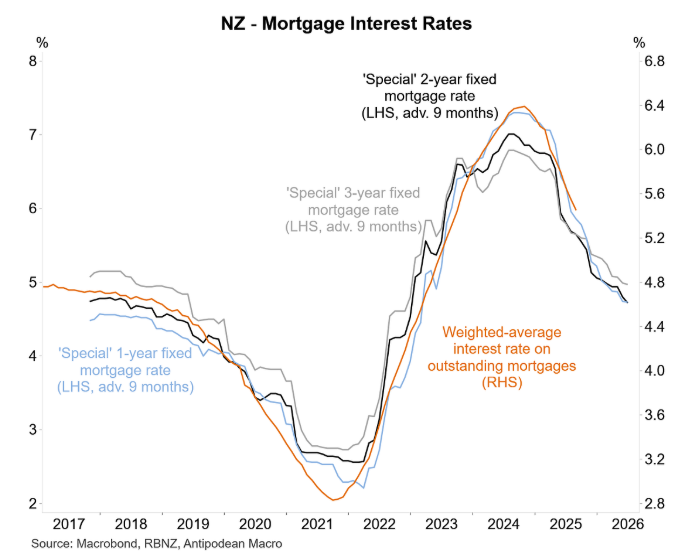
Even so, New Zealand home values have failed to respond, printing another month of zero growth in September, according to the Real Estate Institute of New Zealand (REINZ) House Price Index (HPI).
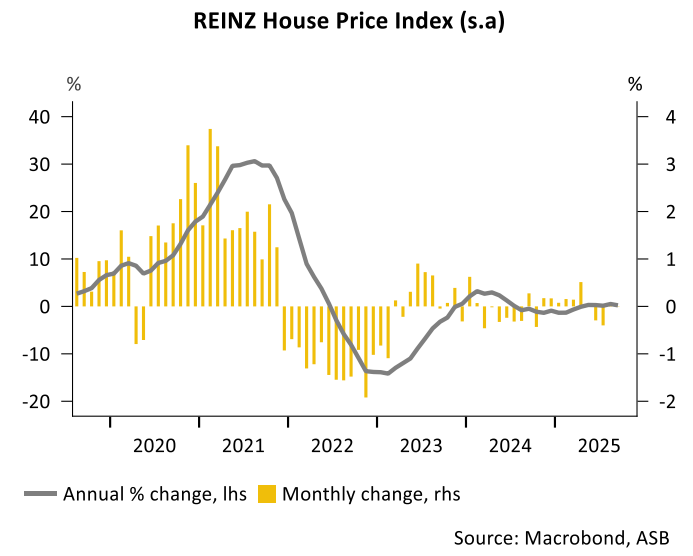
Seasonally adjusted sales have also fallen in 3 of the past 4 months after falling by 2.2% in September.
“This fall in turnover comes despite a strong pipeline of new listings coming onto the market and a high level of housing stock available for sale”, noted major bank ASB. “It suggests a slowdown in housing demand since the middle of this year—and that the fall in mortgage rates seen over the past year has possibly run its course in terms of propping up housing demand”.
“The NZ household sector faces a number of headwinds, including ongoing increases in the cost of living and weak labour earnings”, ASB added.
“Population growth has slowed dramatically over the past year… people continue to leave NZ and the number of arrivals has stagnated. Declines in rents suggest there may be excess supply in the housing market”.
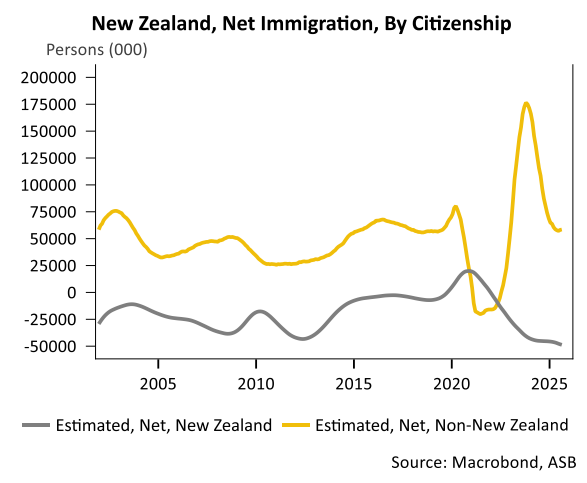
Separate house price data from Quotable Values (QV) reported that the average value of all dwellings throughout New Zealand was $900,521 in the September quarter of 2025, down $9958 (-1.1%) from the June quarter.
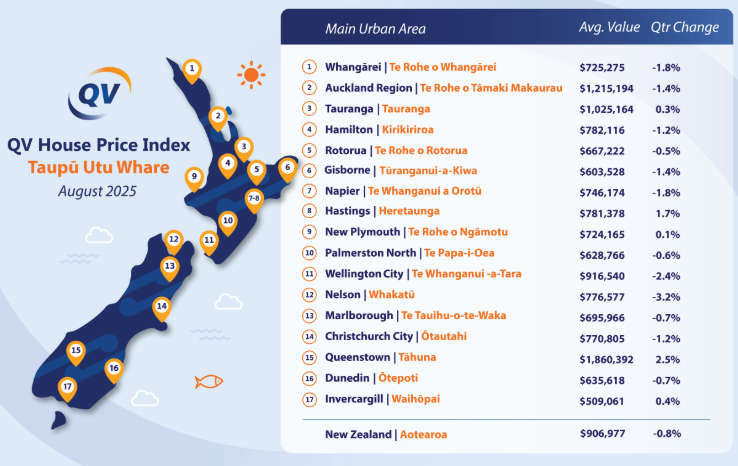
The following chart from Justin Fabo at Antipodean Macro shows that in real inflation-adjusted terms, New Zealand home values have continued to fall to pre-pandemic levels:
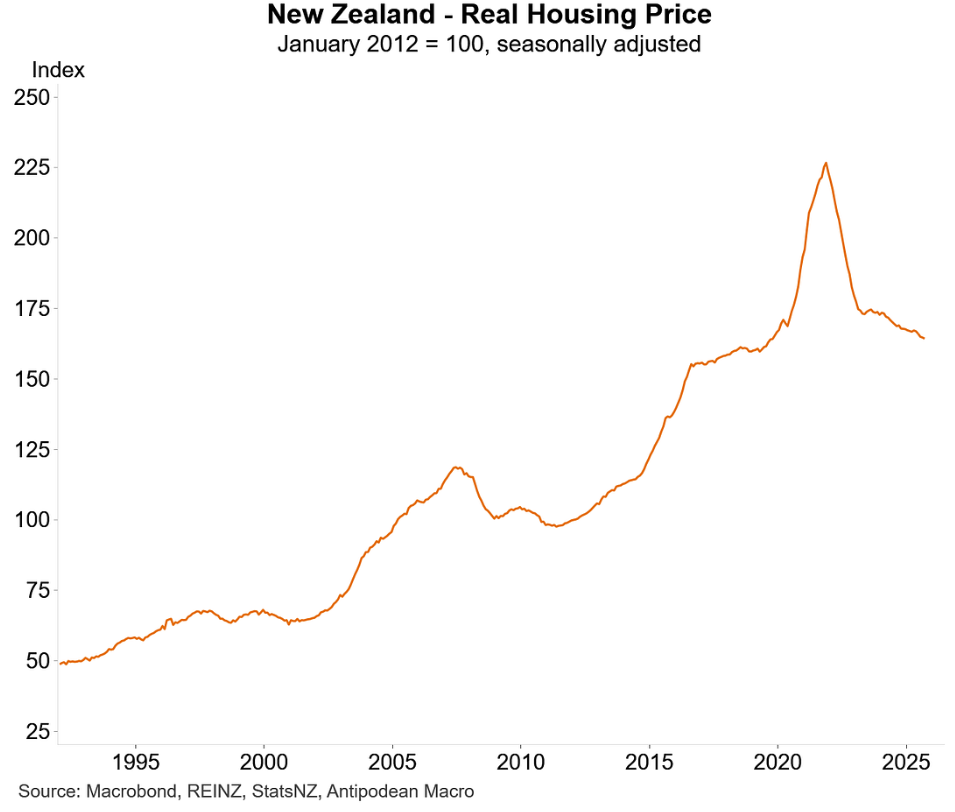
The combination of lower home prices and lower mortgage rates has effectively restored New Zealand housing affordability back to what it was in 2004:
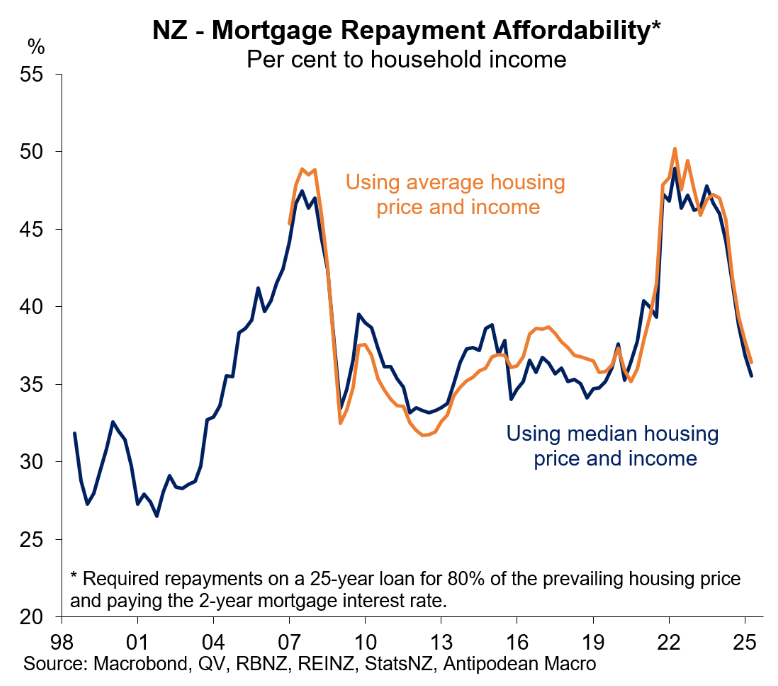
The reality is that if housing affordability is to improve, prices must necessarily fall.
Taking the Australian approach of pumping demand via first home buyer grants, 5% deposit schemes, shared equity schemes, and the like will simply get capitalised into higher home values and larger mortgages.
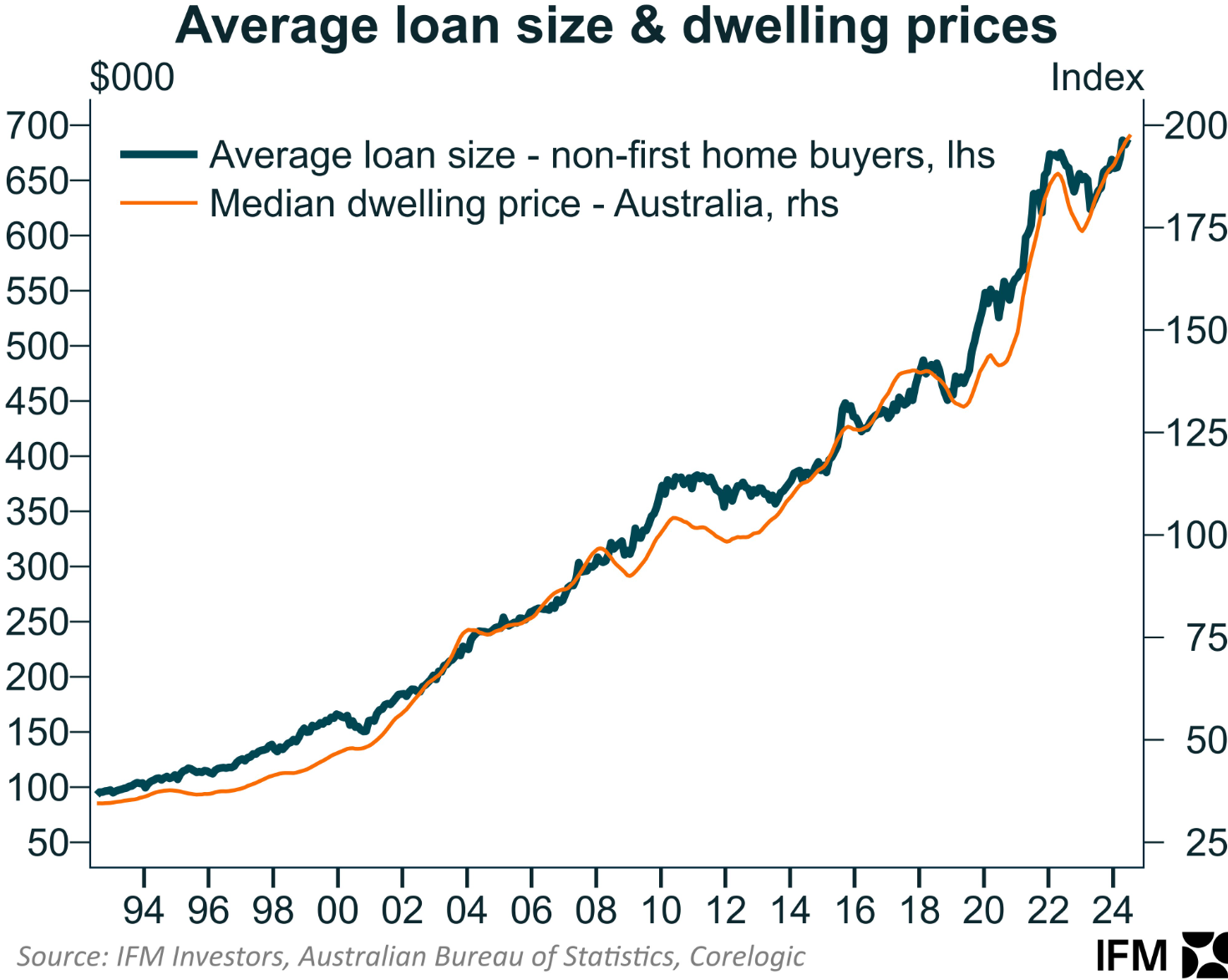
These types of policies are self-defeating from an affordability perspective.
The collapse in New Zealand immigration has also improved rental affordability, as evidenced by the sharp decline in asking rents amid surging rental listings:
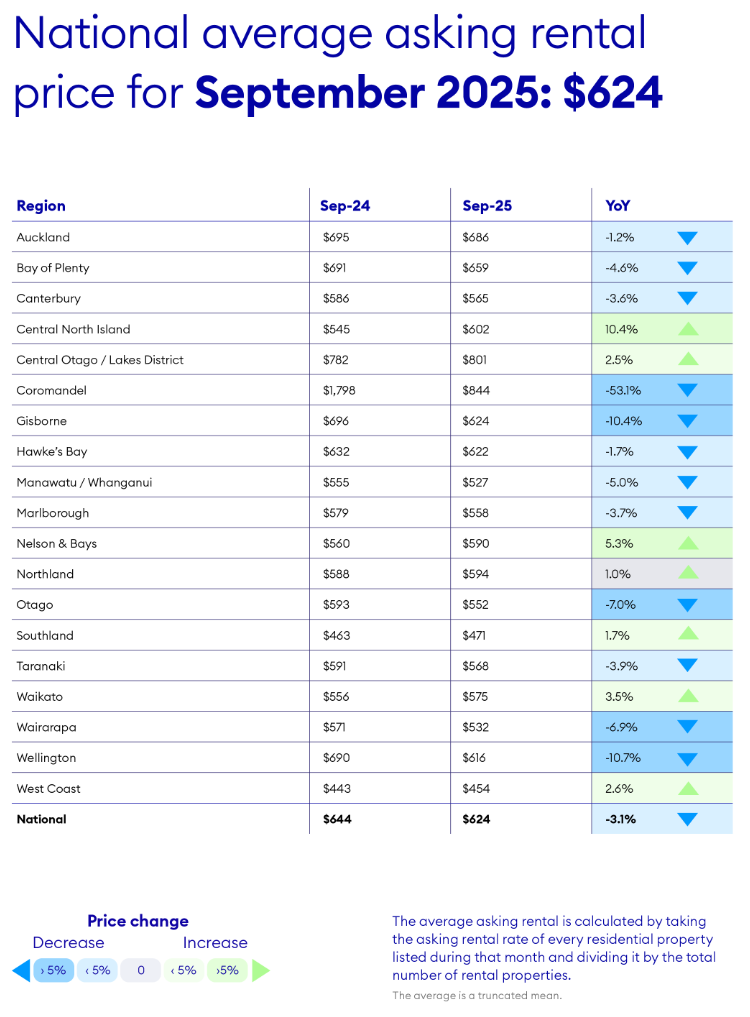
Source: Realestate.co.nz
The following chart from Justin Fabo illustrates the collapse in rental growth more clearly:
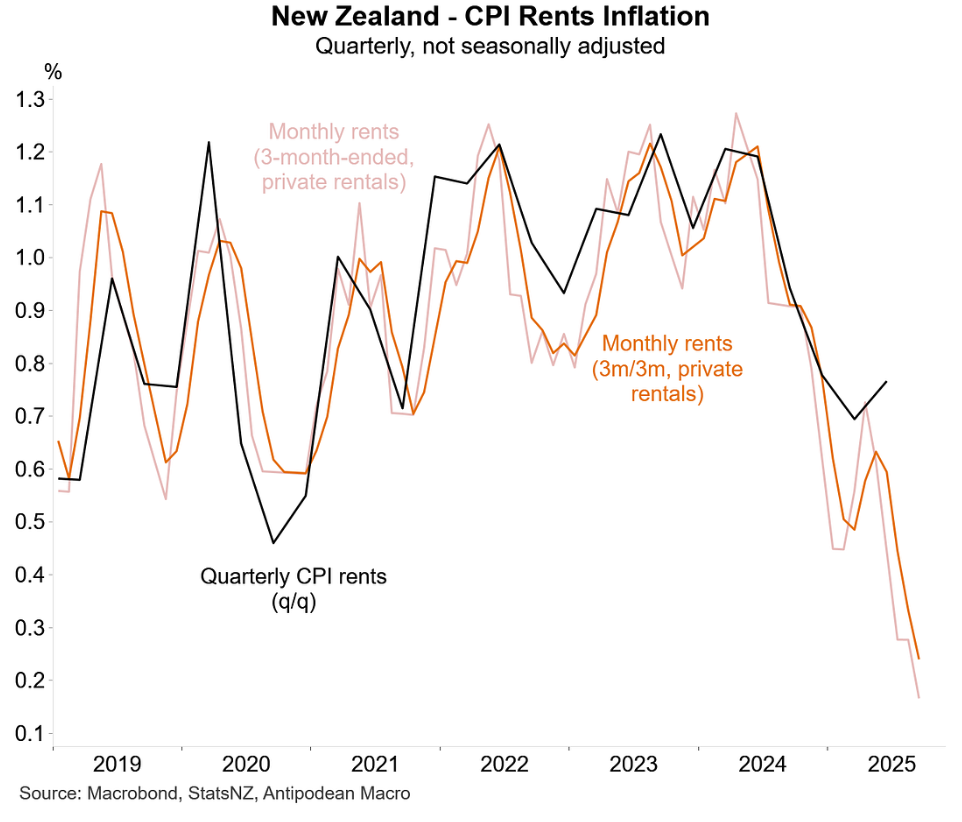
This contrasts sharply with Australia’s experience, where a surge in net overseas migration has reduced rental vacancy rates to a new low and increased rental inflation.
New Zealand’s housing affordability is rapidly improving, whereas Australia’s continues to deteriorate.

